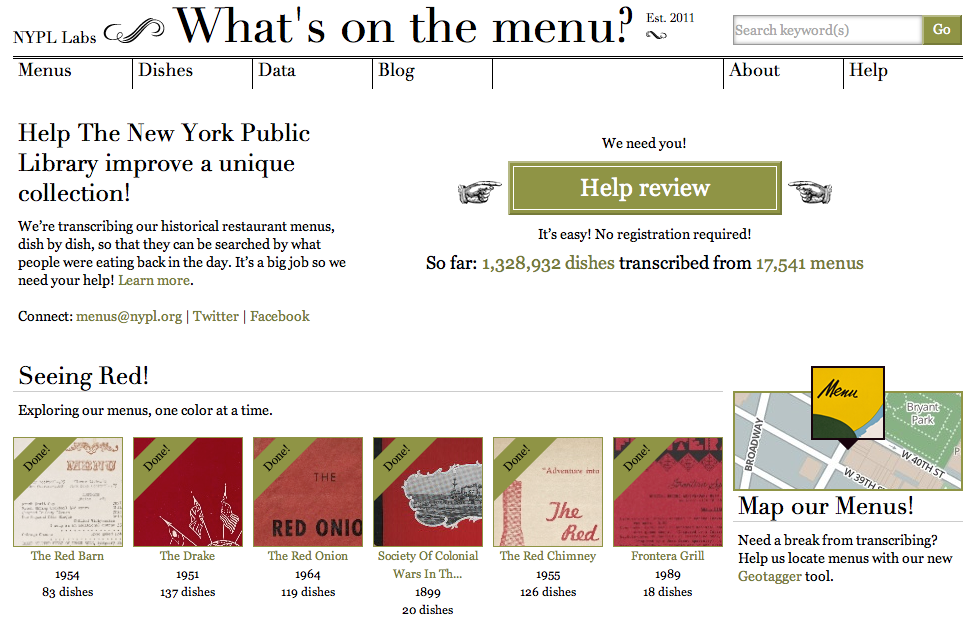Websites for crowdsourcing cultural heritage support participation by being attractive to users.
Explanation: Attractive websites employ clean and consistent design; include interesting content; are well-organized, highly visual and aesthetically pleasing to users.
Benefits: Clean design ensures that no superfluous elements impede visitors from receiving key information and performing the task. Consistent design and navigation minimizes friction and ensures that visitors do not become disoriented or confused. A site that appears professionally designed increases visitor expectations about the probability of project success.
Websites that are attractive encourage new visitors to spend time on the site, and positively influence the decision to contribute. An attractive website contributes to a satisfying user experience, which incentivizes users to return to the site and contribute more.
Examples of compliance with this principle:
- Generous use of space
- Keeping primary navigation options to a minimum
- Large headers and easy to read font
- Webpages that present all content above the fold
- Conveying a sense of immersion
- Up to date design elements
- Static or dynamic images, graphics, data visualizations
- Slideshows
- A grid of collection images
- Themed backgrounds
- Videos on the homepage
Examples of non-compliance:
- Webpages that are busy, text heavy, and feel daunting to visitors.
- Inconsistent or confusing navigation, which may be the result of integrating crowdsourcing functionality into an existing website or using a multi-purpose platform.

